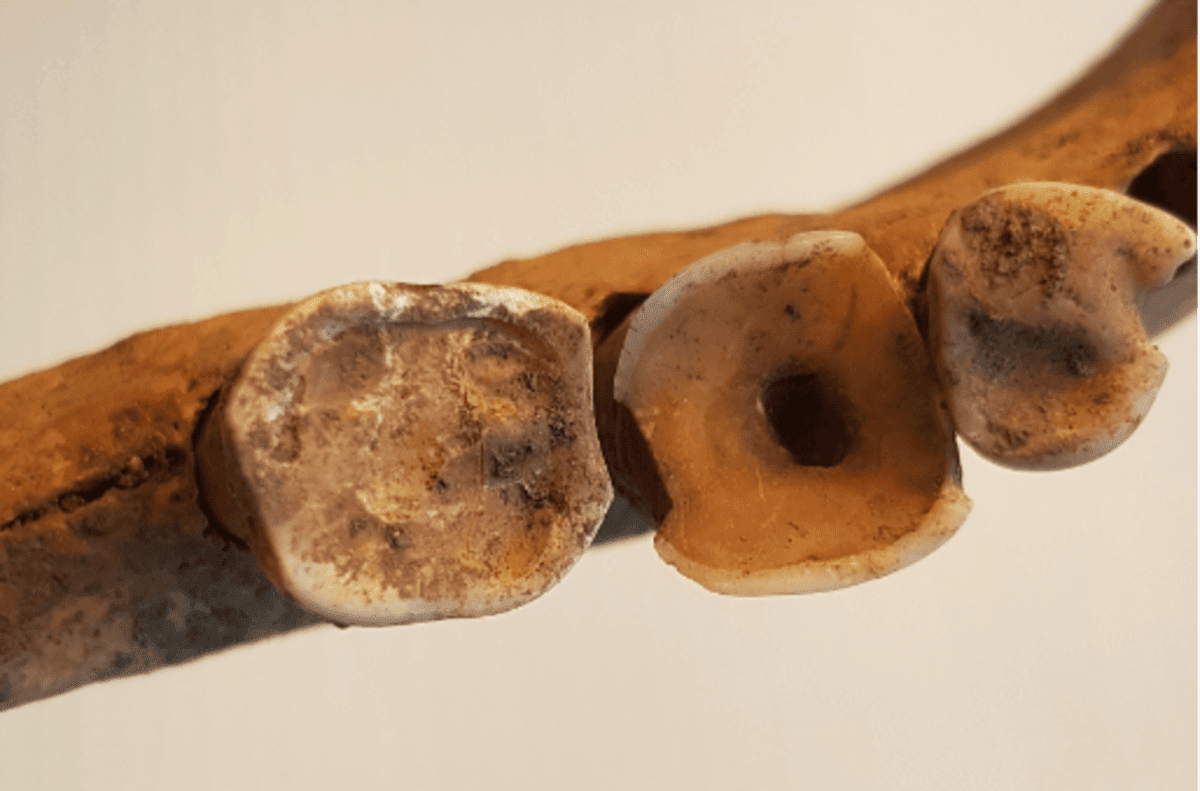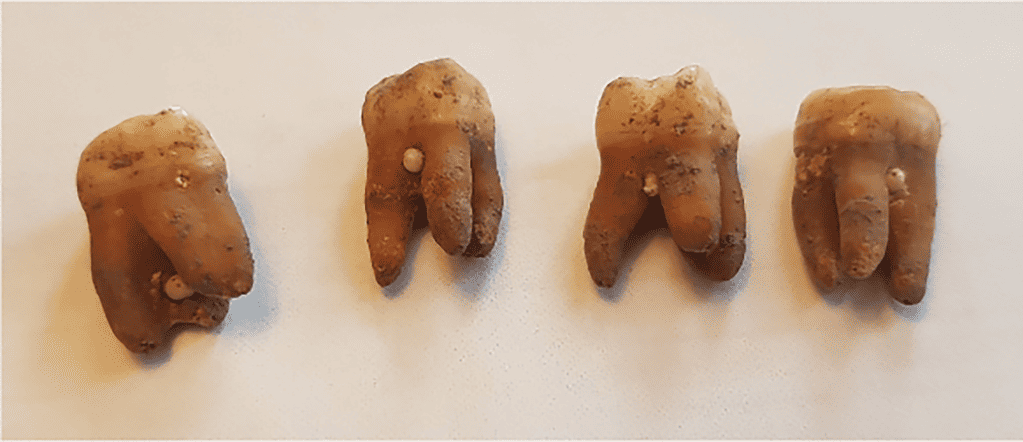Swedish Vikings grappled with distressing dental problems and would, at times, endeavor to alleviate their discomfort with “complex” dental practices, according to a new study. Researchers looked at over 3,000 teeth from Vikings living in Varnhem, a site known for many Viking excavations, including tombs with well-preserved teeth.

In 2005, excavations in Varnhem uncovered the ruins of a Christian church—to date the oldest stone church in Sweden. Close to the church, there was an extensive cemetery with graves dating from the 10th to 12th century. Now, researchers from Gothenburg University have conducted clinical and radiographical studies on the teeth of the individuals found on the site.
The team examined 3,293 teeth from 171 individuals. They performed clinical examinations using conventional dentistry tools under well-lit conditions. Additionally, they carried out X-ray examinations with a technique commonly utilized in dentistry, wherein the patient bites down on a small square imaging plate positioned in the mouth.
A pervasive tooth problem
The results showed that almost half (49%) of all the Vikings studied had one or more dental caries. Children with milk teeth were entirely free of caries, but adults weren’t so lucky — at least one lesion was found in 62% of the adults studied. Tooth loss was also common among adults, with an average loss of 6% during their lifetimes.
The surface most susceptible to dental caries was the root surface — a well-known predilection site for carious lesion formation. The researchers believe that the high occurrence may be linked to periodontal disease. Vikings didn’t use oral hygiene measures aside from tooth picking, “thus causing the (bacterial) biofilm to remain on the root surfaces for longer periods,” the researchers wrote.

Most Swedish Vikings lived in farm-based communities and had seasonal diets that included beef, pork, mutton, fish, dairy products and vegetables. The most readily available drink was beer. The researchers believe that the high intake of starchy foods, in combination with the lack of dental care, explains why carious lesions were so frequent.
The carious lesions also suggest that the Vikings suffered from tooth pain since the cavities were close to the pulp. It’s also likely that food fragments were stuck in open carious sites, causing discomfort.
Viking dentistry
The researchers found abrasion by toothpicks in several individuals, indicating a habit of removing food from areas near the teeth. They also found other cases of tooth manipulation. For example, for two individuals, findings on the mandibular first molars suggested that an opening and widening of the pulpal chamber had been created — most likely to relieve pain. Another case showed abrasion to a maxillary incisor with an apical infection.
This suggests that the Vikings “performed more complex interventions regarding dental diseases than the mere extraction of hurting teeth,” the researchers wrote. While this is the first time that signs of dental treatment have been found in Swedish Viking remains, there are previous examples of dental fillings using beeswax and tooth drilling in the Neolithic Period.
“There were several signs that the Vikings had modified their teeth, including evidence of using toothpicks, filing front teeth, and even dental treatment of teeth with infections,” says Carolina Bertilsson, study author, said in a press release. “The Vikings seem to have had knowledge about teeth, but we don’t know whether they did these procedures themselves or had help.
The study was published in the journal PLOS ONE.






